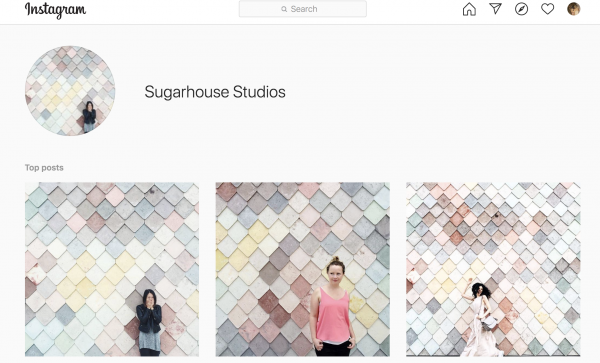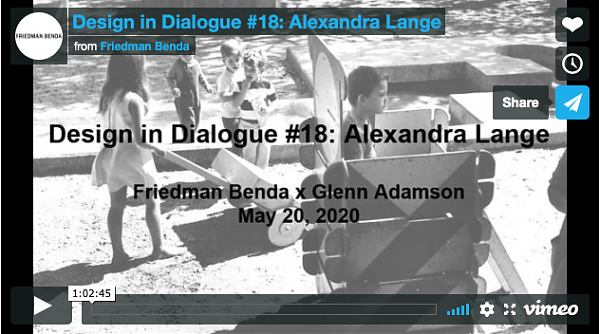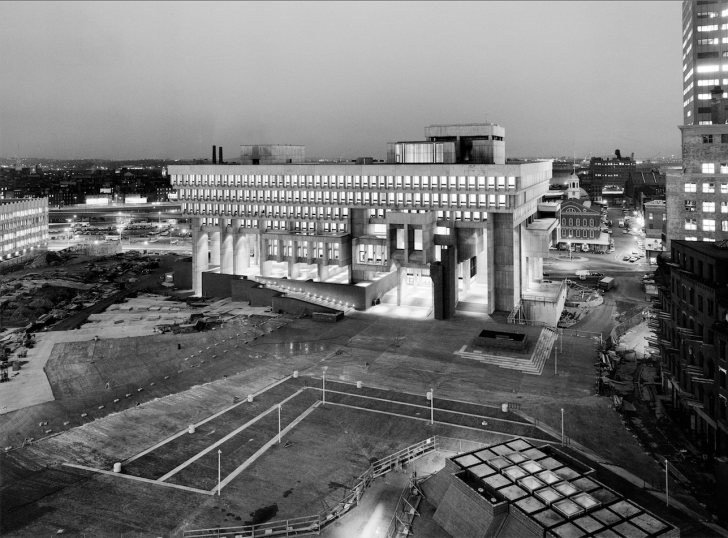How to Make the Most of Covid Winter
Illustration by Andrea Chronopoulos.
In Victorian England, the baked potato had dual purposes. Sold from street-side “cans” — metal boxes on four legs, with charcoal-fueled fire pots within — the potatoes could be used as hand-warmers when tucked inside a mitten or muff, or body warmers when consumed on the spot as a hot and filling snack. Potato sellers by the hundreds set up cans on London streets, selling their wares from August to April, as ubiquitous as today’s ice cream trucks but serving the opposite season.
Buyers and sellers of those spuds had little choice but to be out on the streets, whatever the weather. That’s where the business was, that’s where workers could buy a quick meal, that’s where friends might encounter each other, standing close to the can for warmth. A little food, a little fire, a little chat — these elements made being outdoors in winter bearable.
A hot potato is a small gesture against the elements. But it is also inexpensive, portable, requires minimal setup to cook and comes in its own wrapper. For the winter ahead, American cities need a lot more ideas like the baked potato: pop-up comforts, at many scales, that can gather a crowd outdoors and ensure people get the sun and socialization they need. Don’t write off the darkest season before it even begins. What if cities took their cues from the Victorians, and made no retreat from the elements? What if we spent Covid winter outside … and enjoyed it?
New York Needs to Rethink Time, Not Space, To Reopen
Illustration by Naomi Elliott.
When the Vessel at Hudson Yards opened last March, among New Yorkers’ many complaints about the 150-foot-tall, Thomas Heatherwick-designed mirrored-copper sculpture was the fact that you had to sign up in advance to climb its 2,500 steps. A designer who understood New Yorkers — and not just his billionaire client — would have understood that we do not like to wait.
How quaint that attitude (my attitude) seems now, as I watch New Yorkers line up all across the city — on spray-painted and duct-taped lines, inside subway stations, and awaiting entry to public bathrooms, grocery stores, farmers markets, and museums. Signing up months in advance for a summer slot at a rural campground used to seem like a normal inconvenience; in the summer of 2020, though, we’re signing up for slots on ferries to and from Governors Island. Tomorrow, a section of the High Line will reopen on a timed entry system. It’s not difficult to imagine, as temperatures rise and crowds form, that we may soon be reserving six-foot circles in the park, spots in parking lots near public beaches, or 20-minute time slots at the local splash pad or pool. The fall will bring still more time slots — chosen, not by us, but by teachers and employers.
One of the most potent tools for reopening leaves no visible trace: We can make more space in dense cities by taping off chunks of time, not the floors of our buildings.
Space Invaders: Architecture and A Freeing From The Physical

In the 2009 trial of the founders of Pirate Bay, the defendants were quoted as requesting that the language of the court be amended “We prefer AFK (Away From Keyboard) to IRL (In Real Life)” they said, “because we think the Internet is real.”
Representations of buildings in video games frequently use recognisable forms to anchor us in familiar territory, and yet digital landscapes have the potential to expand our horizons and offer us unprecedented access, when compared to the restrictions and rules of the ‘real’ world. Can the digital ‘freedom’ suggested by video games be used to inspire a rethink of how to approach physical projects? Conversely can the ergonomic, sensory and poetic qualities found within designed material space inspire more ‘feeling’ in the virtual? What can each industry learn from the other to better realise the worlds they create? What is the role of architecture in an alternative reality?
A discussion with
Shumi Bose, Writer, lecturer and curator (chair)
Alexandra Lange, Architecture and Design critic
Will Wiles, Author
Lara Lesmes and Fredrik Hellberg, Space Popular
Gregarious Kythreotis, shed works
Ibiye Camp, Artist
99PI: Instant Gramification

I spoke to Emmett FitzGerard at 99 Percent Invisible about Instagram’s not-so-invisible effect on the built environment.
But Alexandra Lange doesn’t think Instagram is ruining architecture. About ten years ago when Instagram was just getting going, Lange took a trip to an under-appreciated site for bizarre postmodern architecture: Melbourne, Australia. “I’m just completely wowed by these buildings because they’re spiky, they’re covered in neon… and they’re like nothing I’ve ever seen before. And I suddenly have this overwhelming desire to share!” A visual platform like Instagram was the perfect place to share these slices of architecture that she was appreciating. Lange’s time using Instagram led her to believe that the app can have a positive effect on architecture—a place where you could offer a window into the built world and encourage people to notice overlooked buildings.
Design in Dialogue #18: Alexandra Lange

Design critic Glenn Adamson in conversation with Alexandra Lange, leading architectural critic, who shared her thoughts on the pandemic’s impact on the built environment – drawing lessons, in part, from her recently published book The Design of Childhood.
99PI: The Smell of Concrete After Rain

Boston City Hall. Photo by Ezra Stoller/ESTO.
We’ve lost quite a few people in the design world since the beginning of the pandemic due to COVID-19. One of them was Michael McKinnell, co-designer of Boston’s Brutalist City Hall, and another voice who is gone too early was Michael Sorkin. Sorkin was an architect and the Village Voice architecture critic in the 80s. He brought a totally new kind of approach to writing about buildings, one that focused on people and politics.
We spoke with design critic at Curbed, Alexandra Lange, about Sorkin’s work, and Roman Mars reads excerpts from one of his works called “Two Hundred and Fifty Things an Architect Should Know.”
All In The Mind: A riff on creativity, design, and toys

Design and creativity really can work together. We talk with design critic Alexandra Lange and product design educator Barry Kudrowitz who both have an interest in toys – their history, and how they’re created and assessed in the real world. Get your blocks ready to play along.
The Aspirational Fantasy of the Perfect Playroom

Marcel Breuer, House in the Museum Garden, photo by Ezra Stoller (1949).
Hazel Cills asked me to comment for an article on the history of playrooms.
“In the 1950s there was a lot of parenting advice directed at young families about what should be an ideal playroom,” says Alexandra Lange, Curbed’s architecture critic and author of The Design of Childhood: How the Material World Shapes Independent Kids. “It was about art supplies and toys that would spark an inquisitive spirit or a desire to construct.” Magazines stressed that keeping playrooms as simple as possible would help promote a child’s creativity. Architects like Marcel Breuer and Gregory Ain designed and built house models each featuring playrooms in the late 1940s and early 1950s at the Museum of Modern Art garden, tying the playroom to clean, modern design.
It certainly didn’t hurt that a cool, sleek playroom would also reflect parents’ tastes. “Right from the beginning parenting experts and childhood experts are involved and there’s a discussion about whether you should design the playroom for the kids or for the parents,” Lange says. “You have experts saying, you don’t need a fairy tale theme, you don’t need a cowboy theme.”
Future's Past: The historical experiments of Teo Yang

Photo by Gary Yeh.
A traditional Korean guest house should contain four elements: a book, a handcrafted object, a landscape painting and good tea. On a chilly day last December, the fourth item is offered as a welcoming gesture in the reception room of the home of designer Teo Yang, an emerging star in the increasingly sought-after world of South Korean design. Served in small celadon cups, the tea mitigates the draft through the wood-and-glass screen walls of Yang’s renovated 1917 hanok, a tile-roofed courtyard house in the historic Bukchon neighborhood of Seoul. The teacup sits on a footed wooden tray no larger than a notebook—made by a local woodworker—next to a precisely wrapped caramel—made by a local confectioner.
This site-specific still life of tea, caramel and tray provides a capsule summary of Yang’s approach to design, combining past and present in multisensory experiences that include interiors, furniture, scents and skincare. In fact, every detail of his home’s interior—from the built-in cabinetry with arches inlaid across the drawers to the geometric sun, moon and mountains on the sliding doors—is a reflection of the thoughtful balance he strikes between traditional and modern. The hanok architectural style, once seen by Koreans as a relic and an impediment to urbanization, is now appreciated as an important cultural form. But Yang’s interest in the form goes beyond historic preservation. ‘People think that I am one of the cultural keepers,’ he says. ‘Oh, Teo is an important figure because he protects our traditions, but I am not really trying to protect traditions. I want to talk about the future, but in a context. We have a motto at our studio: Past in the future. We always try to think in those terms.’
Coronavirus Will Change the World. Here’s How.

POLITICO asked 34 thinkers about what’s to come post-pandemic. Here’s what I told them.
A revival of parks.
People often see parks as a destination for something specific, like soccer fields, barbecues or playgrounds, and all of those functions must now be avoided. But that doesn’t make the parks any less valuable. I’m sheltering in place in Brooklyn with my family, and every day, the one time we go outside is to walk a loop north through Brooklyn Bridge Park and south down the Brooklyn Heights Promenade. I’m seeing people asking Golden Gate Park to close the roads so there’s even more space for people. In Britain, the National Trust is trying to open more gardens and parks for free. Urban parks—in which most major cities have made significant investments over the past decade—are big enough to accommodate both crowds and social distancing. It helps that it is spring in the northern hemisphere.
Society might come out of the pandemic valuing these big spaces even more, not only as the backdrop to major events and active uses, but as an opportunity to be together visually. I’ve been writing a book about shopping malls, and I would certainly not recommend a visit right now (all those virus-carrying surfaces). But, in suburban communities, malls have historically served the same function: somewhere to go, somewhere to be together. What we have right now is parks. After this is all over, I would love to see more public investment in open, accessible, all-weather places to gather, even after we no longer need to stay six feet apart.
On Twitter
Follow @LangeAlexandraOn Instagram
Featured articles
CityLab
New York Times
New Angle: Voice
Getting Curious with Jonathan Van Ness